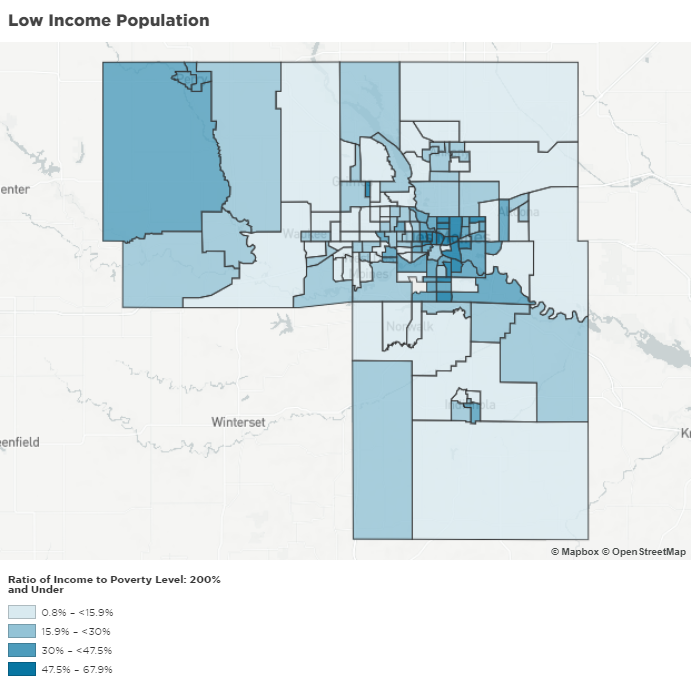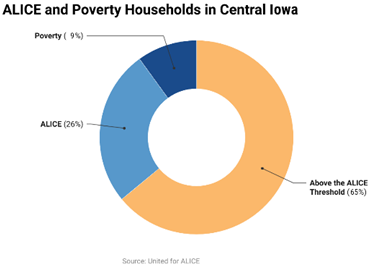Community Gardens
How can you get involved?
-
Community Gardens Mini Grant
UWCI helps facilitate a mini grants process for organizations or government entities to apply for funding. 10–25 sites across central Iowa are funded with this grant each year. Priority is placed on gardens serving communities with limited access to healthy foods, such as high-poverty or food desert neighborhoods.
-
Community Garden Directory
A tool for searching for community gardens and demographic information, displaying them in a map and directory is provided to help improve access to fresh, locally grown produce.
-
Resources
Explore our selected collection of resources to support your gardening journey, whether you’re starting new or enhancing an existing garden. Find guides, toolkits, and educational materials to help you cultivate a thriving garden and engage with community.
What is a Community Garden?
A community garden is a shared space where individuals collectively grow plants or raise animals. These gardens can be situated on either public or private land and are maintained by local residents. They may serve a general neighborhood or focus on specific groups, such as a school garden involving students, teachers, and parents, which supports educational activities. Alternatively, a community garden might be run by a nonprofit organization in a neighborhood, bringing neighbors together to enjoy fresh produce, especially in areas lacking access to fresh food within half a mile.
Benefits of Community Gardening
(Information from American Community Garden Association)
- Improves the quality of life for people in the garden
- Provides a catalyst for neighborhood and community development
- Stimulates Social Interactions
- Encourages Self-Reliance
- Beautifies Neighborhoods
- Produces Nutritious Food
- Reduces Family Food Budgets
- Conserves Resources
- Creates opportunity for recreation, exercise, therapy, and education
- Reduces Crime
- Preserves Green Space
- Creates income opportunities and economic development
- Reduces city heat from streets and parking lots
- Provides opportunities for intergenerational and cross-cultural connections
Our garden partners have achieved notable success in feeding their neighbors.
In 2023, our community gardens reported:
-
1172911729
Pounds Produced
-
1172911729
Pounds Donated
-
3334733347
Units Produced
-
2100421004Units Donated

Benefits of Expanding Fresh Produce Access for Low-Income and ALICE Households
Families below poverty level are those whose income falls below a set threshold determined by the federal poverty level (FPL). This means their earnings are not sufficient to meet basic needs such as food, housing, and healthcare. These families often qualify for various forms of government assistance to help cover essential expenses.
In central Iowa (Polk, Dallas, and Warren counties), there are 58, 864 people below the federal poverty level (Source: US Census Bureau ACS 5-Year 2018-2022).
ALICE (Asset Limited, Income Constrained, Employed) may be a neighbor. You may be ALICE. As cashiers, waiters, childcare providers, and other members of our essential workforce, ALICE households earn above the Federal Poverty Level (FPL) but cannot afford the basic cost of living in their county. Despite struggling to make ends meet, ALICE households often do not qualify for public assistance. These struggling households are forced to make impossible choices each day.

Sponsor Highlight

Questions?
For any eligibility questions, please contact:
Diana Echeverria
Community Impact Manager
diana.echeverria@unitedwaydm.org
For Foundant support, please contact:
John Soener
Community Investments Manager
john.soener@unitedwaydm.org
Make a Difference
Sign up and take action
Lorem ipsum dolor sit amet consectetur. Viverra neque condimentum sem pretium pellentesque.